Spree Commerce Roundup: Why Brands Like Bonobos and Chipotle Run on Spree
What’s so good about Spree Commerce?
For starters, it’s free (open source).
It’s used by over 45,000 storefronts globally (and adding).
It’s built on Ruby on Rails.
If that doesn’t mean anything to you, don’t worry. I’ll explain later why these are all good things.
Why Are You Researching Spree Commerce?
Let’s first consider your possible situation. You’ve either:
- Heard of Spree Commerce and want to know anything and everything about it, OR
- Are considering switching to Spree Commerce but want to know if it would be right for your particular ecommerce business, OR
- You just happened upon this blog post and are curious.
Good news! I’ve got all those situations covered.
In this article, I’m going to:
- roundup the top-performing ecommerce websites that are built on Spree (so you can compare your company)
- give insight into why I think Spree is working for these brands
- give you a general pros/cons list of Spree
- give you a FREE Comparison PDF Guide between Spree Commerce and Magento
These Are the Best Brands Using Spree Commerce
When considering a new ecommerce platform, it’s important to look at other companies who are doing a good job of really leveraging that solution. One of the most common issues we see with our clients here at Blue Stout is that the one thing holding them back from scaling to their next revenue tier is their choice of ecommerce platform.
It’s one of the most important decisions you can make as an ecommerce business.
So let’s look at who’s running their Spree Commerce store well, and how they are leveraging its functionality to scale.
Bonobos

We’ll start off with a brand that’s mentioned in nearly every UX (user experience) design post we write: Bonobos.
Bonobos began as a “digitally native brand” selling great-fitting men’s pants solely online. They’ve since expanded into multi-channel retail, spearheading the movement of guideshops: brick-and-mortar locations where guys can come in, try on clothes with the help of a “Bonobos ninja”, order what they like, and have a cold beer while shopping. Their guideshops are esstentially an extension of the excellent user experience that a customer has on the Bonobos.com website.
The brand has become the largest apparel brand ever built online in the United States and is led by Andy Dunn, a CEO & founder I’ve come to admire because of his transparency and honesty in business – and just being human, really. (Follow him on Medium for some truly great articles.)
So what makes Bonobos so great and worth mentioning? Their UX (user experience) design of their ecommerce website which is built on Spree.
Kind of.
Bonobos.com actually is built on Solidus which is a fork of Spree Commerce. If you don’t know what that means, here it is in a nutshell:
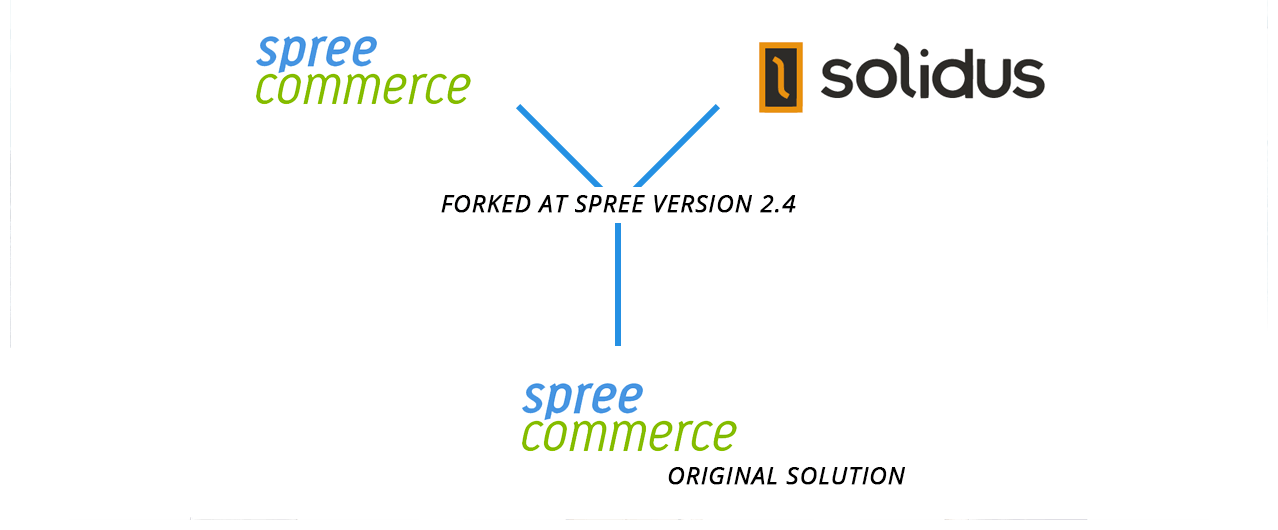
When a software like Spree forks, that means the development team has decided to take the current version in a new direction. So the team forks and the new solution forks.
That’s how Solidus was born.
(If you’re more interested in the whole story, you can read our more in-depth article here.)
Solidus and Spree Commerce are often praised for their flexible API. It’s one of their best features.
Why is that important?
Any third-party apps or softwares needed to run your business most likely need to connect to your platform via API. And some API’s are not as flexible as others.
Connecting your ecommerce inventory management software, for example, to a Magento store is more complex than it would be connecting it to a Spree Commerce Store.
That’s because Magento, by default, has a larger code base. So API integrations are going to be more complex than Solidus or Spree (which have about 1/10 of the code that Magento does), regardless.
The more code you have to modify to get data in and out of your platform, the more difficult the process can be. So Spree Commerce and Solidus win here due to their naturally lean code base.
[content_upgrade]
*Takeaway: If you have multiple sales channels, Spree is capable of syncing inventory and sales through all of them.
[/content_upgrade]
Chipotle

Outside of the apparel and fashion industry, there’s another notable brand using Spree Commerce to run their restaurant chain website: Chipotle.
Chipotle is a well-known chain of fast food Mexican grills rapidly populating across the U.S. They did $4.5 billion in revenue in 2015, and continue to grow their operations. So as you can imagine, supporting their online activity would probably require a fairly robust ecommerce platform.
Chipotle website has such functionalities as:
- Online ordering in any location
- Online store for gear shop
- Purchase gift cards / check gift card balance
- Calculate the nutrition of your Chipotle meal
Spree is known for being able to scale well. The platform can grow easily from 500 SKU’s to well over 30,000 products. That makes it a natural choice for Chipotle, a company who is regularly growing and needing support for each new location and its products.
[content_upgrade]
*Takeaway: If your company is steadily growing, Spree Commerce will scale with you as needed.
[/content_upgrade]
MeUndies
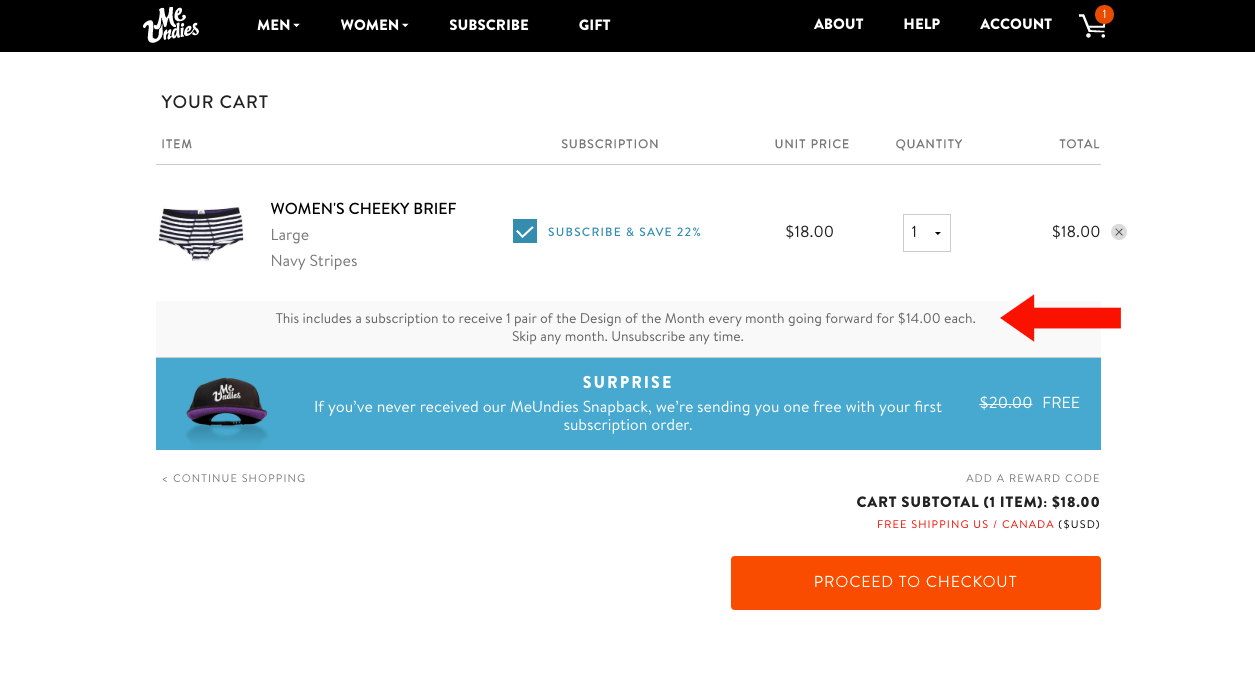
Next, let’s look at a rising brand in the underwear vertical: MeUndies. Another of the “digitally native vertical brands”, MeUndies was born and operates solely online.
And, as you can logically guess from the name, they sell underwear.
MeUndies began as a subscription underwear service and has now reached its fourth year, reporting a 3x growth year-over-year. (source) This subscription model is part of what makes them unique in comparison to other more traditional underwear retailers which now make up 20% of their customer base. (source)
[content_upgrade]
*Takeaway: If your ecommerce company currently has a subscription service or plans to implement one as part of your business model, Spree Commerce is able to easily support this. It integrates well with many ecommerce payment processors and your development team can quickly set up a recurring payment system and shipment system.
[/content_upgrade]
Stowaway Cosmetics

Stowaway Cosmetics is a startup making waves in the beauty industry. With investors like Jason Calacanis and Vayner/RSE, Stowaway has raised over $1.5 million. (source) Since their launch in February of 2015, Stowaway has grown an average of 35% month over month and already 20% of Stowaway’s “mature customer base” has repurchased items. (source)
Stowaway wanted to redefine what kind of products women use in their daily makeup routine. The brand focuses on making the “right size” of product that women can easily carry from place to place and also totally use before the product expires.
With beauty subscription services like Birchbox and Ipsy becoming quite popular, Stowaway saw room to capitalize on this. They, too, have implemented a subscription service as part of their business model.
Stowaway.com is built on Spree Commerce and supports the startup’s initial product inventory which is fairly small. However, Spree supports their subscription service initiative, allowing their customers to easily receive products based on a customized quiz they complete online.
[content_upgrade]
*Takeaway: if you’re a startup that wants to be able to scale quickly when needed, Spree Commerce is a smart platform choice from Day 1. It could reduce problems that many startups encounter when they’re ready to scale and are forced to switch to a different platform. Additionally, many growing startups waste resources on development costs that could’ve been prevented with a smarter initial platform choice.
[/content_upgrade]
Huckberry
Lastly, let’s have a look at one of Allen’s (our CEO) favorite brands: Huckberry.
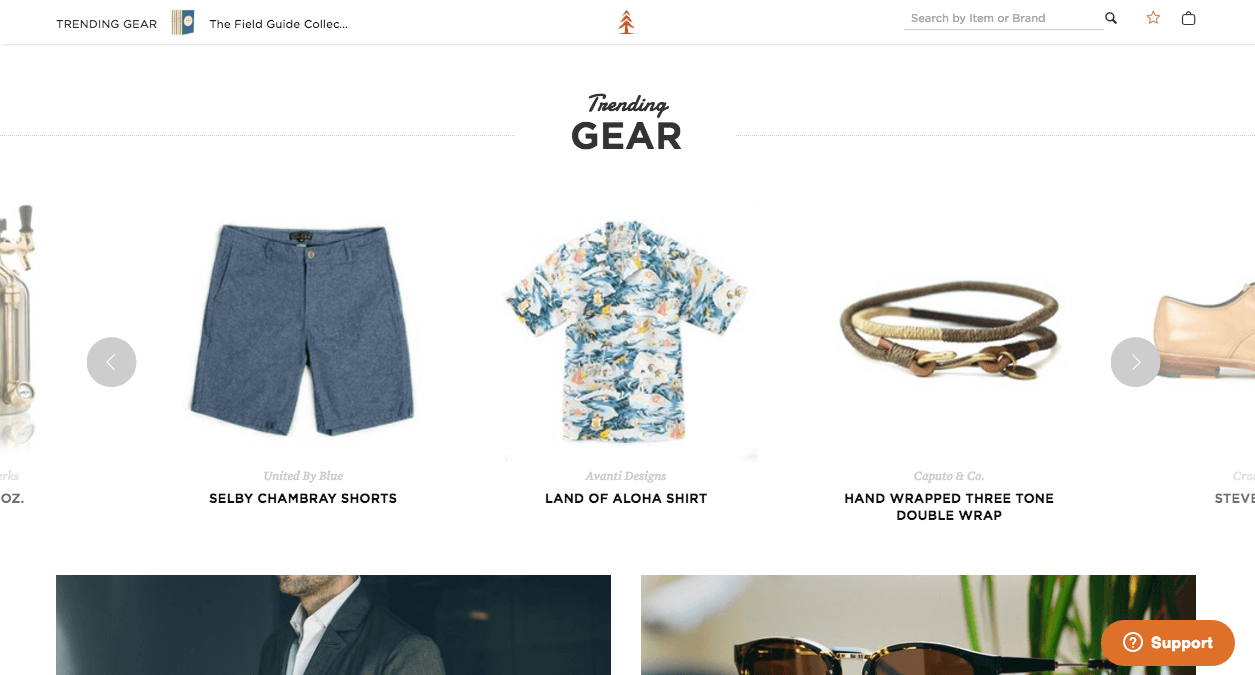
Huckberry is an ecommerce website that features apparel and gear tailored toward the urban outdoorsman. It’s a members-only setup that features curated apparel and gear, along with the stories behind the products. They’re known for being a bootstrapped startup that has grown rapidly, eclipsing $15 million of revenue in under 5 years since its beginning. (source)
Their business model is email-driven retail. And what’s important about this detail is that if customers are clicking on a specific product directly from their email, the product page they land on better do a damn good job of selling this product. Otherwise, the company business model is completely flawed.
Huckberry does a fantastic job of building their product pages to convert. This very thorough study of Huckberry, provides an analysis of why their product pages are so great. The brand has broken it down into 4 sections that provide value to the customer and ultimately convince them to buy the product:
1. Features Overview

2. Fabric
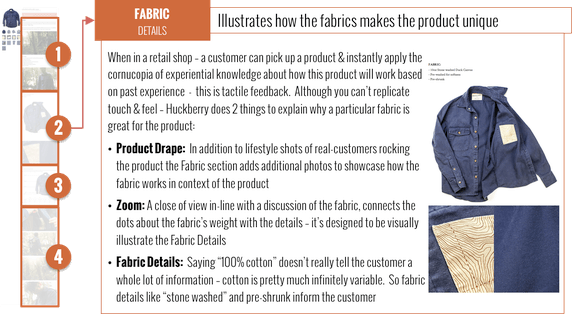
3. Fit
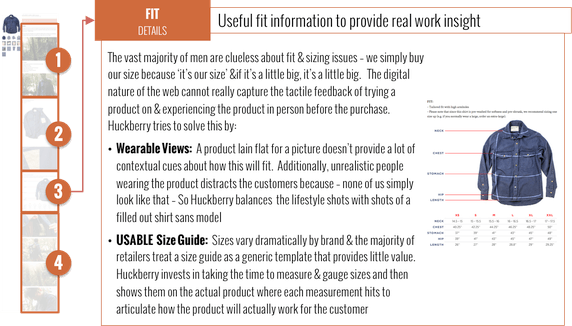
4. Closing Remarks

What does this have to do with Spree Commerce?
Spree has a very flexible front-end which allows brands to build anything they’d like. (In this post entrepreneur Zack Kanter talks about how he built a highly custom search function with on Spree.) The flexibility ensures you can specify exactly how you want your user experience (UX) to flow on the most important pages of your ecommerce website – like your product pages. Building a product page design into your theme that has the best information hierarchy design can help you optimize your page performance and ultimately increase conversions.
[content_upgrade]
*Takeaway: Spree is flexible enough to allow you to design the optimal experience for your customer’s shopping journey which is good for sales and search engine rank.
[/content_upgrade]
What are the Pros & Cons of Spree Commerce?
Now that you have a few examples of who uses Spree Commerce and how it enables these businesses to grow, let’s look at the pros and cons of using the open source software for your own store.
Pros of Spree Commerce
- Lean code base: by default, Spree comes as a lightweight storefront. It uses around 45k lines of code. The initial size of the code base impacts operational and developmental processes.
- Built on Ruby on Rails: Ruby on Rails is a programming language that is optimized for sustainable programming and productivity. Rails developers understand Spree much faster than a PHP developer can understand Magento, for example, because the framework is more efficient and minimal. You’ll have much better chances of forgoing a large learning curve with your developer and saving yourself time and money.
- Can handle high traffic well: Your server can handle many requests simultaneously, but if you have a sudden spike in traffic, it could suffer a loss in performance, which may result in slowing down your ecommerce store or even shutting it down. Spree takes care of server requests quickly (413ms). (source)
- Integrates with many payment processors: Spree integrates with over 125 payment processors. (source)
Cons of Spree Commerce
- Development requirements will impact your costs: since Spree is built on Ruby on Rails, if your internal development team isn’t familiar with this framework, you’ll undergo a large learning curve when it comes to development. You’ll either need to hire an ecommerce development agency who can build on Rails, or hire an internal Ruby on Rails programmer.
- Hosting responsibilities: since Spree Commerce is an open source solution, hosting responsibilities – and security – will fall on your shoulders to set up.
How Can You Decide if Spree is Right for You?
If you’re researching platform options for your store, it’s likely that you’ve encountered many other solutions. The amount of choices you have can be quite overwhelming.
Magento is usually another popular solution that you’ll come across but, compared to Spree, it is a bit more complex development-wise.
We’ve put together an in-depth comparison guide to give you a side-by-side look at Spree Commerce vs. Magento for growing ecommerce websites:
In this Comparison Guide you’ll discover:
- The difference between an open source and a hosted ecommerce platform
- How the Spree Commerce backend differs from Magento
- 5+ differences between these two popular platform choices






